-
ABOUT US
-
ACADEMICS
Curriculum Program
Departments
- English
- High School Chinese
- Primary and Junior School Chinese.
- High School Mathematics
- Middle School Mathematics
- Primary School Mathematics
- Music and Fine Arts
- Physical Education
- Physics
- Chemistry
- History and Geography
- Physical Science and Optional courses Department
- Middle School Biology
- High School Biology
- Social Sciences
- Computer Science
- Courses in Primary School
Achievements and Matriculations
College Counseling
Science & Technology Innovation Contest
Subject Competition
-
ARTS
-
ATHLETICS
-
AT SHSID
SHSID ∣ TIMES
PTSA
Club Exhibition
- 龙吟社
- Live 2 Drama
- Choir
- Hip-pop Dance Club
- The Primary School Dance Troupe
- Symposiums Club
- Biology Workshop
- You Shan
- VEX Robotic
- Peking Opera Club
- Baseball Club
- Model United Nations
- The World Scholar’s Cup
- Future Problem Solving Club
- United States Academic Pentathlon
- OM Club
- AMC Club
- Music for Patients
- SHSID Gazette
- Smile Charity
- Cultural Moments
- SciAcademy
- Stem Doge Alliance
- Chinese Debate Club
- IAA
- Mock Trial Club
- Zhengming Club
- Furry Friends
- GT-Racing
- Village Radio
- IMMC Club
- Creative Design and Intelligent Fabrication
- Future City Research Project
- ECOCAP
- AdvocaSEA
- SPDC
- Medishine
- Floorball Club
- Animusic MTC
- Wings Up
- All Booked
- Cyano
- Birding Community
Health and Wellness
Campus Safety
Cafeteria Service
-
ADMINISTRATION
-
ADMISSIONS
-
ALUMNI
Alumni Information
Honors Students
- Class of 2025
- Class of 2024
- Class of 2023
- Class of 2022
- Class of 2021
- Class of 2020
- Class of 2019
- Class of 2018
- Class of 2017
- Class of 2016
- Class of 2015
- Class of 2014
- Class of 2013
- Class of 2012
- Class of 2011
- Class of 2010
- Class of 2009
- Class of 2008
- Class of 2007
- Class of 2006
Who Studied at SHSID
SHS Foundation
-
DOCUMENTS
Puxi & Pudong Campus: G4-5 CME Safety
To further enhance students' safety awareness and closely align with their academic and daily lives, SHSID Grade 4 and 5 have launched a safety-themed curriculum. This program aims to systematically disseminate knowledge and implement scenario-based practices, helping students gain an in-depth understanding of various safety principles and effectively master fundamental self-protection and first aid skills. Furthermore, through collaboration between the school and families, the reach of safety education has been extended into households, collectively safeguarding students' healthy growth.
Grade 4
During the safety-themed program, the fourth-grade students systematically learned about safety knowledge and put it into practice through emergency drills and scenario-based simulations. They also took on the role of "campus safety designers," contributing ideas for the school's safety slogans. The entire process helped the students internalize safety awareness in their hearts and externalize it in their actions, making it a truly rewarding experience.

Keep the common-sense rules in mind
The cultivation of campus safety awareness has always been integrated into the daily fabric of school education. For the fourth-grade students in Puxi campus, the Hsi Building presented a completely new environment, so during the first week of the safety-themed program, teachers used clear floor plans to provide detailed explanations of key locations on each floor, effectively mapping out a "safety guide" for the students. In class, teachers played videos to vividly illustrate important routines like daily schedules and circulation routes, ensuring every student could navigate the new semester changes with confidence and clarity.

After solidifying the safety foundations of the new environment, the teachers focused on core scenarios of campus life for the students. Through lively exchanges and sharing, safety rules were transformed from external requirements into the students' own understanding and sense of responsibility.
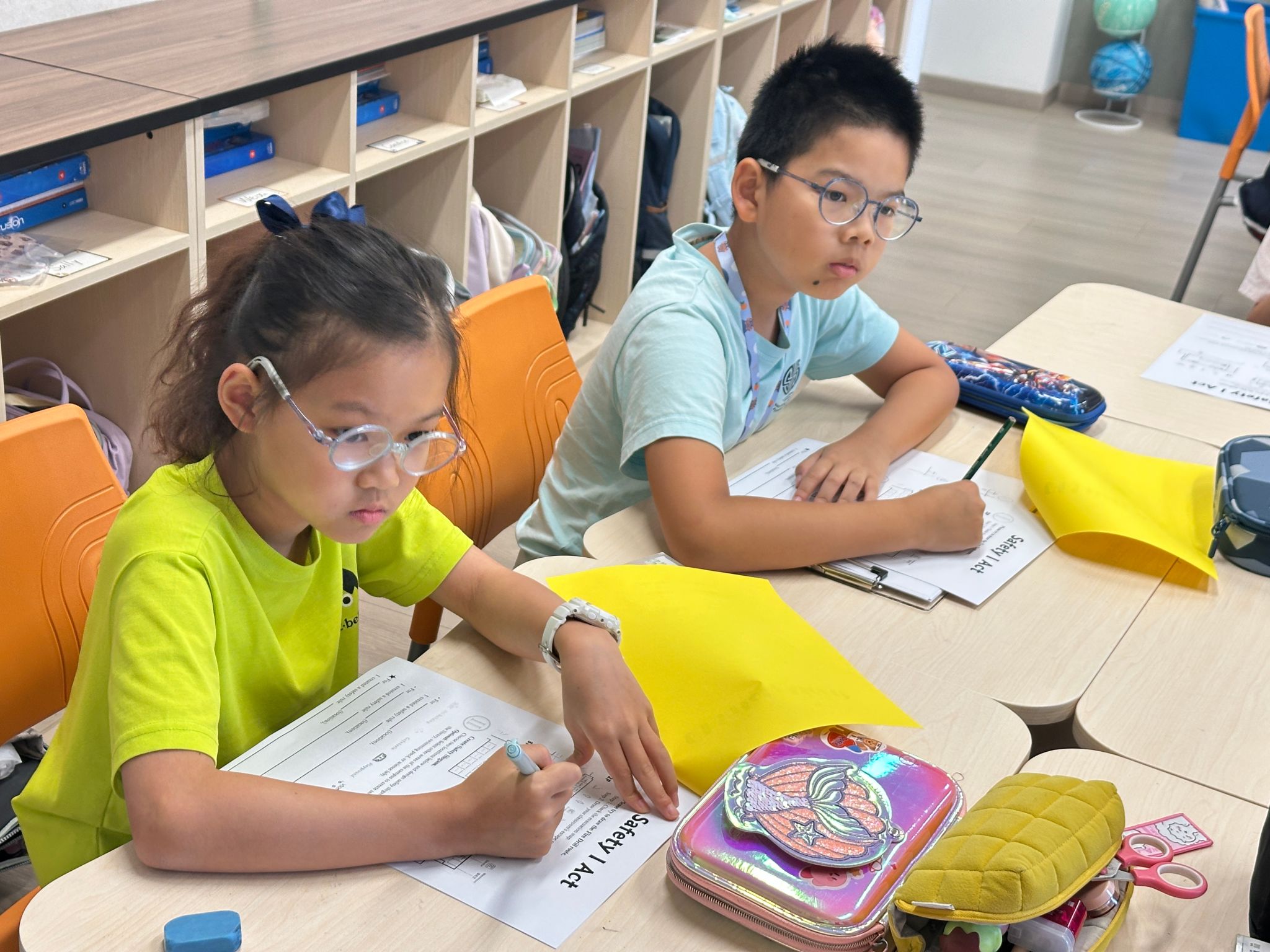
Conduct scenario-based safety drills
Following this, the fourth grade conducted a fire evacuation drill. Prior to the formal exercise, students familiarized themselves with the evacuation routes from their respective classrooms, while teachers emphasized key precautions. The entire drill proceeded safely, orderly, and methodically. Through this practice, students not only reinforced their knowledge of escape procedures but also mastered correct evacuation techniques, effectively enhancing their ability to respond to fire emergencies and ensure their own safety.
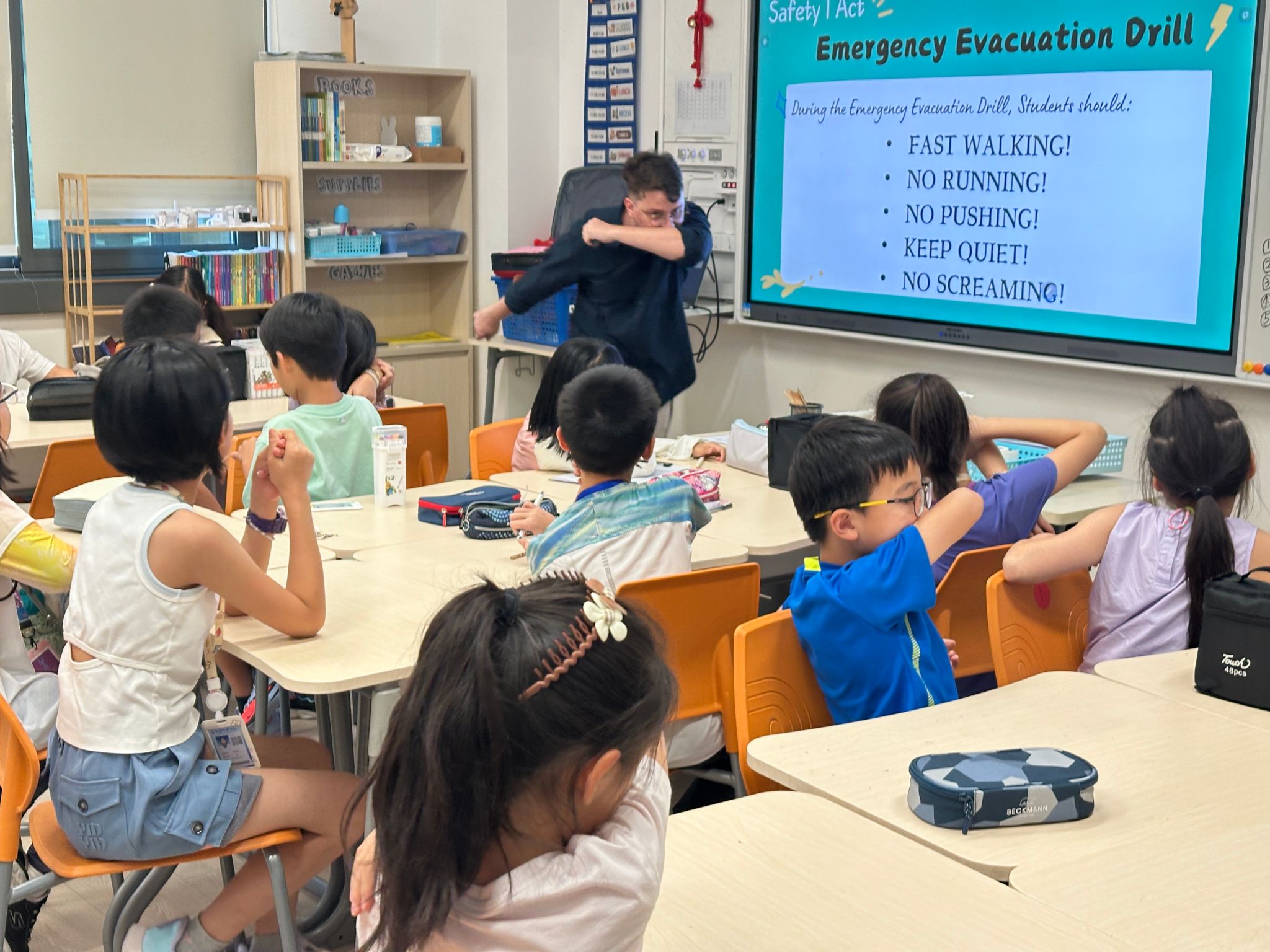
The program consistently emphasizes that safety precautions should not stop at the school gates but must also extend into every household. To this end, under the careful guidance of their teachers, students flexibly applied the safety knowledge they had learned to real-life situations. They took on the role of responsible "home safety officers," engaging in the practical task of designing fire escape route maps for their own homes. During the activity, the students analyzed the layout of their homes, considered the location and safety of community exits. This process not only served as a dynamic application of safety knowledge but also gave the students a deeper understanding of their everyday living environments.

Ingenious Ideas, Shared Safety
Whether it's "no chasing" in classroom corridors, "no loud noises" inside teaching buildings, or hygiene standards in the cafeteria, these remain persistent priorities for the school. To truly embed this safety awareness into everyone's mindset, teachers encouraged students to create tailored safety slogans for various areas of the campus. By integrating their daily observations with acquired knowledge, the students designed a series of thoughtful and inventive slogans. From gentle reminders like "Walk quietly and slowly in the West Building" to advocacy for "Polite behavior on the school bus," the students used vivid illustrations and eye-catching text to make safety guidelines intuitive and relatable. This visually engaging approach not only showcased their creativity and practical skills but also enabled them to transform safety knowledge from external requirements into internal conviction, truly achieving the internalization of safety awareness.
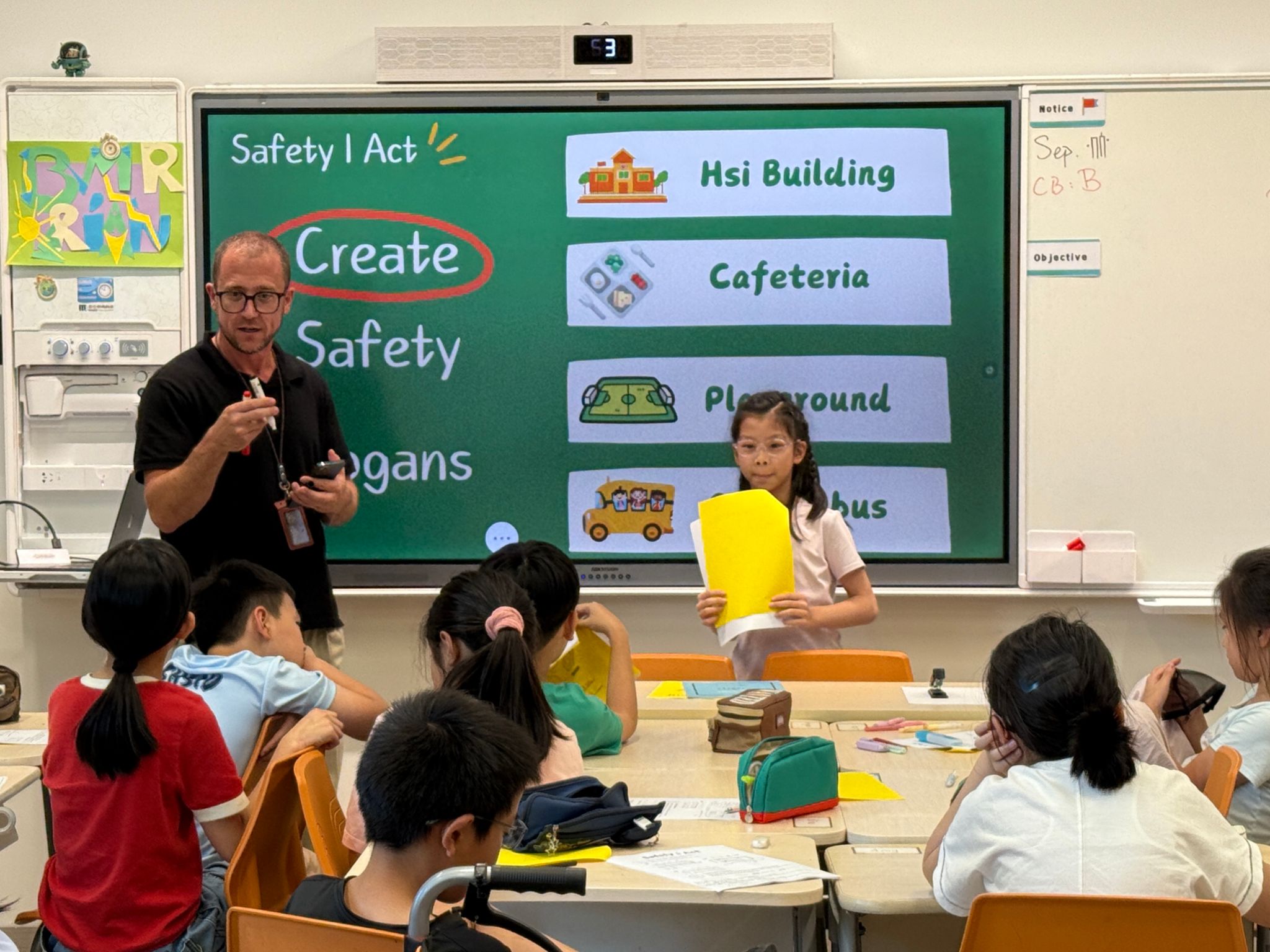
During subsequent sessions, the teachers conducted scenario simulations, using physical demonstrations and hypothetical situations to thoroughly explain the purpose of each item in the emergency kit. In the hands-on segment, participants actively referenced the supply checklist to customize their own emergency kits. Throughout the process, interactive discussions and practical exercises reinforced safety knowledge and enhanced everyone's ability to respond to emergencies.

Following the conclusion of Safety Month, fourth-grade students reflected on the fire safety, first aid, and other safety knowledge they had acquired through self-evaluation handbooks. This learning journey helped students recognize that safety is not merely a set of school rules, but a lifelong capability crucial to both themselves and their families. The thoughtful reflections documented in their handbooks signify the students' transformation from passive recipients to proactive individuals, internalizing safety awareness as a conscious life attitude and laying a solid foundation for their future well-being.
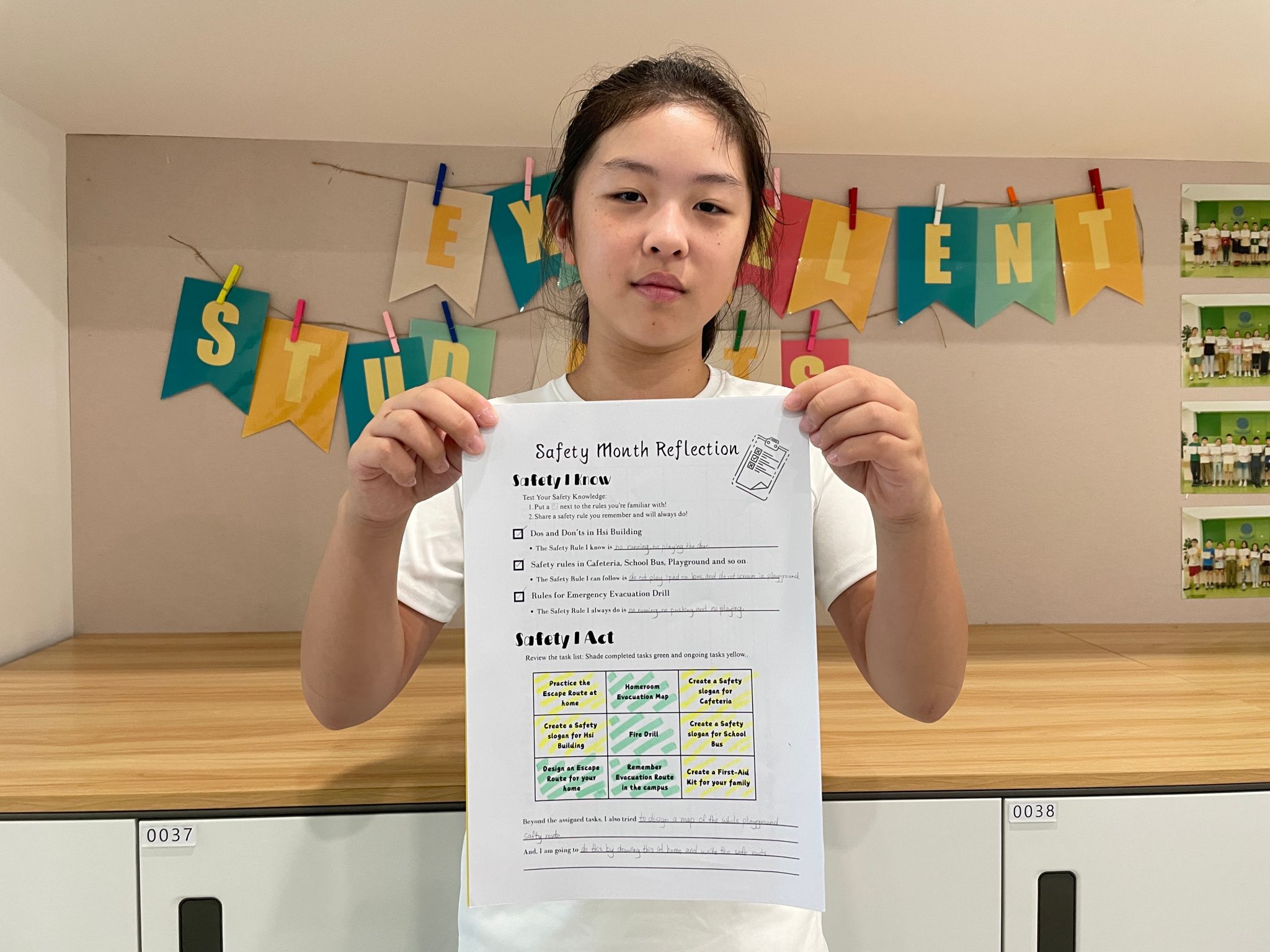
Grade 5
Through nearly a month of systematic learning, Grade 5 students have developed a deeper understanding of the word "safety." From recognizing their own emotions, protecting personal safety to maintaining a safe campus environment and contributing to the community, students have not only mastered practical safety knowledge and skills, but also made a remarkable leap— from "safety learners" to "safety builders."

Focusing on Emotional Safety
The first week centered on mental health, helping newly promoted Grade 5 students better adapt to a new stage of learning and life. Teachers introduced the topic of mental health through vivid cases, guiding students to realize that emotional management is an essential part of personal safety. Following this, everyone participated in a picture book reading activity. The vivid illustrations and heartwarming stories made abstract emotions tangible and relatable, helping the students learn to engage with their feelings.
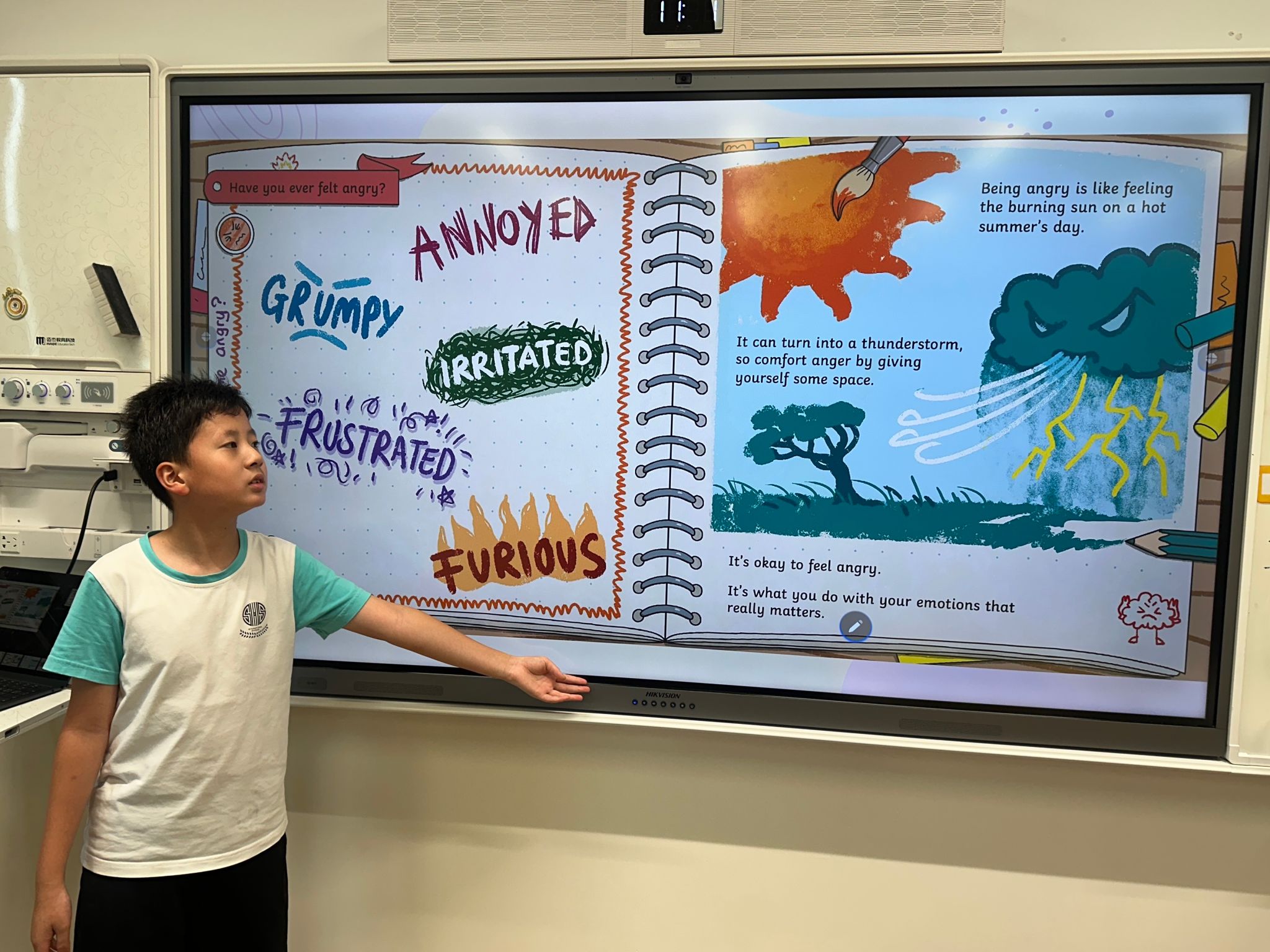
To further understand students' new experiences in Grade 5, the class created "Emotional Weather Charts." Teachers provided weather symbols such as suns, raindrops to represent various emotions. Students chose and drew symbols that reflected their first-week feelings and shared the stories behind them. Many students candidly shared their confusion, nervousness, and anxiety. In response, teachers encouraged the idea of "facing emotions instead of avoiding them," leading discussions on coping strategies. Together, the class created "Emotional First Aid Kits" where students combined scientific methods with personal experience to propose emotion-based solutions. Teachers also reminded everyone that if negative feelings remain despite these efforts, it's important to seek help from parents or teachers promptly.
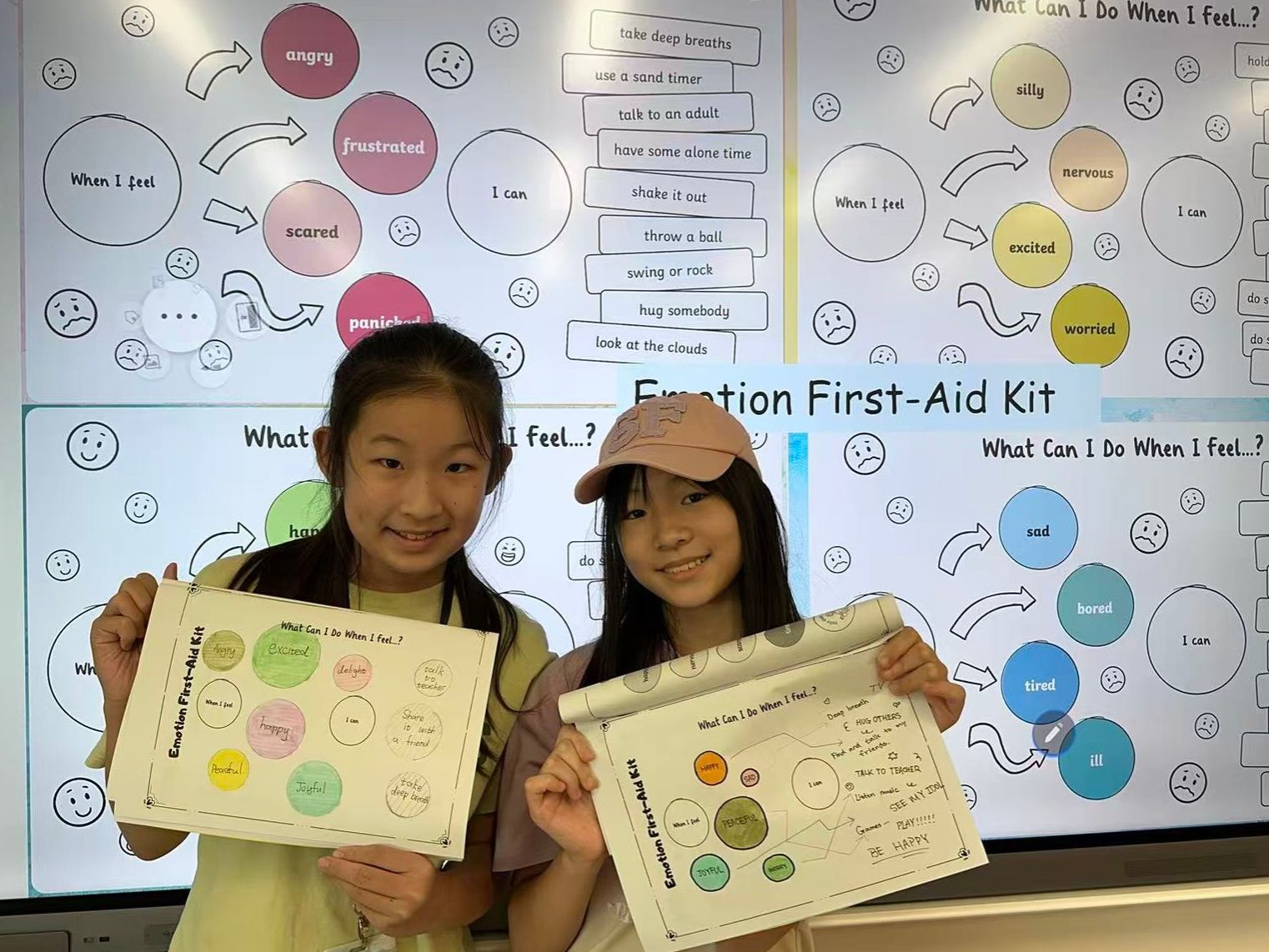
Strengthening Safety Awareness
Next, the course shifted to practical safety training, improving students' ability to handle emergencies. Through scenario simulations, teachers explained what constitutes an emergency and discussed proper responses to common emergency situations. Students also learned about the importance of emergency kits and designed their own versions, including band-aids, flashlights, bottled water, and emergency contact cards. As they shared and compared ideas, students gained a clearer understanding of the purpose of each item and developed a proactive mindset — "be prepared before danger strikes."
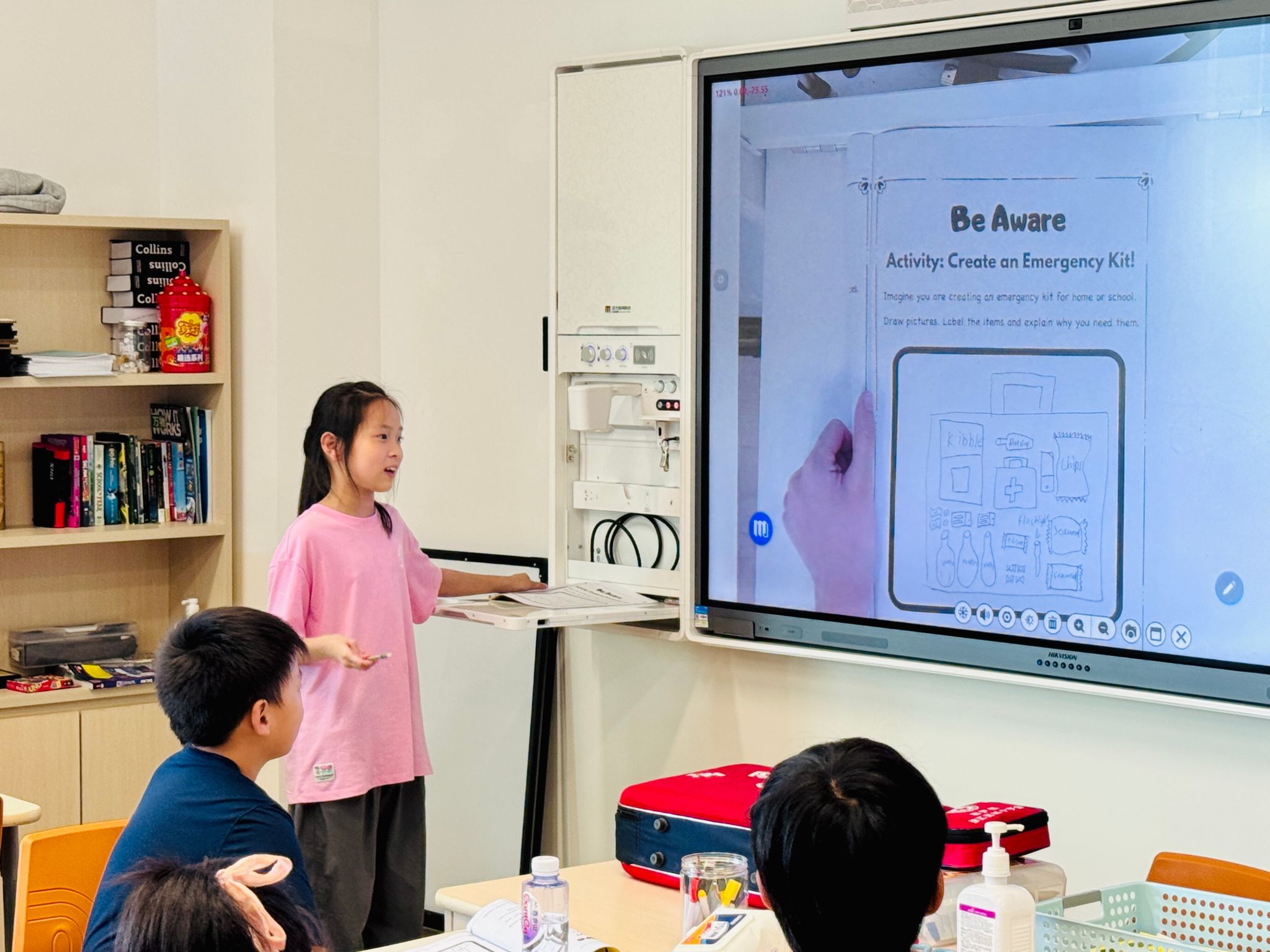
The highlights of the program were the fire drill and first aid skill training. Before the fire drill, students reviewed key escape principles. During the drill, everyone cooperated calmly and efficiently, evacuating quickly to the designated safe zone. The experience significantly enhanced both fire safety awareness and emergency response ability.

In the first aid session, teachers used videos and demonstration to explain the principles of triangular bandaging. Amid laughter and concentration, students not only mastered useful life-saving skills, but also realized the deeper meaning of scientific first aid — it requires both the willingness to help others and the knowledge to protect oneself effectively.

Practicing Safety Responsibility
The goal of this Safety Month program was not only to learn but also to empower students as "safety ambassadors." In class, students reviewed essential campus safety rules and visualized these rules through creative safety posters on themes. The artworks, filled with vivid colors and thoughtful messages, became powerful tools for campus safety education, reflecting both creativity and responsibility.

One of the most memorable moments was the Safety Presentation Activity led by G5 ASB members. After preparing slides and quiz questions, they visited first-grade classrooms to share safety tips in simple and engaging language. During the mini quiz session, first graders eagerly raised their hands to answer questions, creating a lively and enthusiastic atmosphere. Through this activity, fifth graders not only deepened their own understanding of safety but also demonstrated the leadership and sense of duty expected from senior primary students.

At the end of the Safety Month, students recorded their reflections in self-evaluation booklets and wrote sincere feedback for their peers during peer review sessions. The program also emphasized home-school collaboration, inviting parents to learn about the course content and observe their children's progress. Together, school, family, and students formed a joint force for safety education— allowing safety awareness to extend beyond classrooms and into everyday life.
This safety-themed curriculum for fourth and fifth graders focuses on reinforcing fundamental campus safety knowledge. Through practical methods like scenario-based drills, it not only fortifies students' safety awareness but also sows the seeds of safety awareness within classrooms and families, truly achieving the integration of knowledge and action in safety education. Transitioning from actively acquiring knowledge to proactively putting principles into practice, students have evolved not only into individuals who understand safety and protection but also into guardians of campus security. They have built a robust campus defense through both knowledge and action. This growth represents not only an enhancement of safety skills but also a significant advancement in their sense of responsibility and mindset of maturity.

(Written by Yutong Zhu, Cathy Cao
Pictures by Minxuan Cao, Teachers
Reviewed by Ms. Lu Luting, Mr. Wu Xiaodong, Shiyu Wu, Louie Parker)